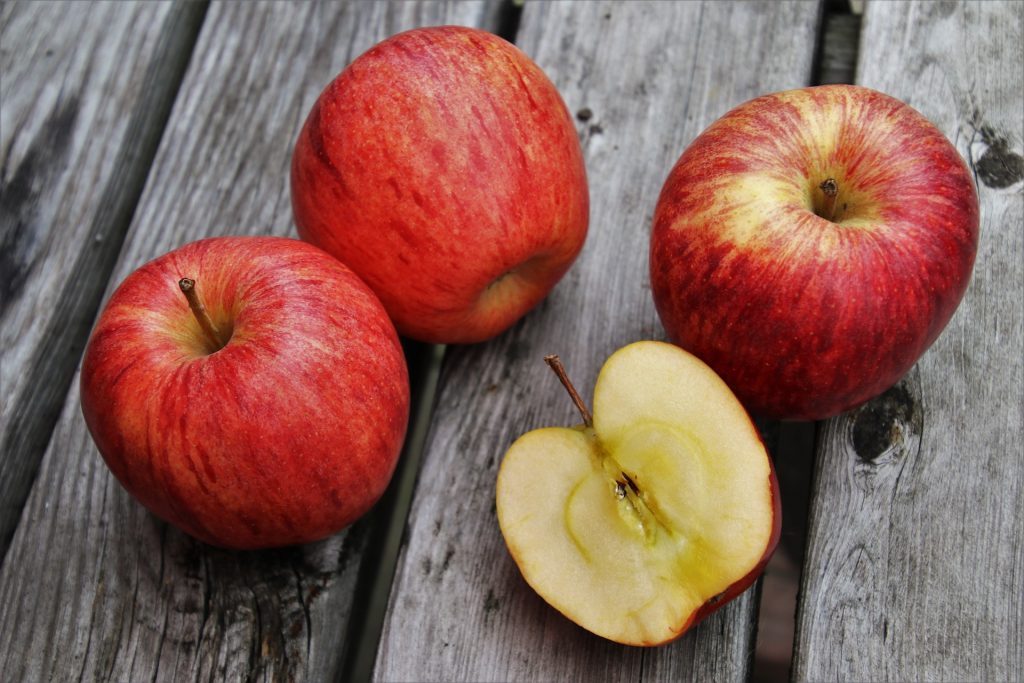The interest in the relationship between what we eat, the composition of our microbiota, and how it affects our health has led to a recent surge in research studying these associations.
In this post we have briefly summarized three presentations from the Nutrition 2020 online conference arranged by the American Society of Nutrition.
The speakers on the topic of “Plant-Based Foods and a Healthy Microbiome” were:
• Paul Cotter, PhD, Head of Food Biosciences, Teagasc Fermoy, Cork, Ireland
• Kieran Tuohy, PhD, Head of Department, Food Quality and Nutrition, Fondazione Edmund Mach San Michele all’Adige, Trentino-Alto Adige, Italy
• Thais Cesar McGovern, PhD, Associate Professor, Sao Paulo State University, Araraquara, Sao Paulo, Brazil
Paul Cotter on the potential of plant-based fermented foods and fiber to modulate the gut microbiota
While our body consists of 10 trillion cells and 23 000 genes, our microbiota consists of 100 trillion cells and 3 million genes. Thus we’re more microbial than human in our makeup. The microbiota exists at multiple different places within our body; on the skin surface, the oral cavity, the vagina, in breast milk. However, the largest proportion is found within our guts. Both in the stomach and the small intestine, but to an even greater extent in the large intestine.

The microbiota play different roles, some are beneficial, some are undesirable, while some do very little at all. Just recently we’ve started to understand the role of different microbes thanks to technological advancements. The same advancements that have impacted human genomics. That is, insights related to DNA sequencing.
In the past, the study of microbiota relied upon culture-based approaches. This approach could study one microbe at a time, and only those that could be grown in a laboratory. Gut microbe in particular is hard to be cultured in a laboratory, as they live in an anaerobe environment and require specific nutrients. However, these limitations don’t apply to studying the DNA of the microbes thanks to DNA sequencing-based approaches.
When referring to all the DNA of the microbes present in a particular environment, the term metagenomic DNA is applied. The DNA sequencing method applied today is thus referred to as whole metagenome sequencing or shotgun sequencing. In addition to bacteria, also fungi and viruses, and other microbial communities that are present, can be studied. It also gives an insight to not only what microbes are present, but also what their specific role might be. So the genes in the gut are related to the production of toxins, antibiotic resistance etc. The question is then if we by altering our diet can affect what genes (i.e. microbes) are present in our guts? And thus decrease or eliminate undesirable microbes, and increase the presence of desirable microbes.
Thanks to this, and other approaches, we’re starting to get a much better understanding of the impact of the gut microbiome on health. This refers to, among other functions, vitamin synthesis, digestion, immune stimulation, and impact on gut-brain axis. The gut microbiota changes over our lifetime. It is impacted by a lot of factors early in life, such as whether we had vaginal birth or cesarean, whether or not we were breastfed, exposure to antibiotics etc. Although to a more subtle degree, it is also impacted later in life by factors such as diet, antibiotics, hygiene, whether we have pets, exercise, stress, medications etc.
The hypothesis for Paul Cotter and his research team is to see whether we can “mine” the microbes in our guts for products that can promote health and treat disease. But also to see if fibre and fermented foods can have beneficial changes to the composition and function of the gut microbiota.
It is believed that the adaptation of a westernized lifestyle have had a negative impact on our microbiota. Even to the degree that certain microbes are becoming extinct, and not being passed on from one generation to the next. This is due to our diets (to a large degree related to decrease intake of fibers and fermented foods), use of antibiotics, formula-feeding etc. Choosing for example a Mediterranean diet over a Western diet can have a profound effect on our health as well as our gut microbiota, by enhancing the diversity and the functions of our microbiota.
For example, a fibre-rich diet improves the production of short-chain fatty acids and other metabolites that can contribute to enhanced production of mucus and the production of antimicrobial peptides, reduce excessive gut permeability and oxygen levels. Moreover, dietary fibers bind to toxic bile acids, which leads to the release of minerals and phenolic compounds that can be absorbed by the distal gut. Some fibers are regarded as being prebiotic, i.e. enchances the growth of desirable microbes, such as bifidobacterium and lactobacillus. There is now growing interest in next generation probiotics, such as faecalibacterium, akkermansia etc.. Enhancement of these microbes can occur directly through the impact of fibers on the microbial community, or indirectly through the growth of other microbes which then provide compounds that are released and utilized by the desired microbes.
Fermented foods, which has been produced for millennia all across the planet, have recently be given a renewed interest in western countries due to their potential health benefits, such as increasing levels of “missing” microbes in our gut. Some praise of fermented foods have gone too far though in relation to their health benefits, e.g. that all fermented foods are equally good for you and that they can cure every ailment out there. However, even in research, fermented foods have been associated with a wide range of health benefits, including the prevention of type 2 diabetes, cardiovascular disease, obesity, osteoporosis, depression, IBS etc. Some of the strains of microbes found in fermented foods are closely related to strains marketed as probiotics as well. For researchers, the long-term goal will be to harness the microbes in fermented foods in order to generate foods with evidence-based health-promoting features.

There’s a wide variety of fermented foods, including both beverages (e.g. kombucha) and solid foods (e.g. kimchi, kefir). The study of the microbiome in fermented foods have led to the discovery and interest of entirely new species, and we are just starting to research what their potential role is and what metabolites they may be producing. The study of fermented foods also looks at cluster of genes, i.e. health associated gene clusters, which may be associated with colonizing, surviving or modulation pathways. These clusters are mainly found plant-based fermented foods, specifically brine- and sugar-foods. A recent study has also shown that a lot of the lactobacilli found in the human microbiome are very similar to the ones found in fermented foods. Thus highlighting the fermented foods as the most likely original source of those lactobacilli and providing evidence for their direct impact on the human microbiome.
In conclusion, there is increasing interest and appreciation for the role of the gut microbiota in human health, and there is also increasing evidence that fibres and fermented foods may enhance both gut microbiota composition and function.
Kieran Tuohy on Phytonutrient:Microbiome Interactions for Human Health
In the last century of human evolution our diets have become much less diverse than ever before in history, to a large degree due to the current agricultural practices (e.g. “the green revolution”). More specifically, our diets have become less diverse in dietary fibers and polyphenols, which in turn affects our microbiome negatively.
Phytonutrients (or polyphenols) provide the colour and many of the flavours in the fruits, vegetables, and berries we eat. They are complex aromatic compounds with a complicated chemistry, and 90 to 95% of these compounds escape digestion in the stomach and small intestine and reach the colon. When they come in contact with the intestinal microbiota in the large intestine they are broken down into smaller phenolic acids (smaller aromatic compounds). This changes their biological availability and can now be absorbed from the intestine. It also changes their biological activity. E.g. many of them are naturally antioxidant. Many of them also act as signaling molecules in different cells around the body, and have been implicated with some of the health benefits observed from diets high in fruits and vegetables.
The phytonutrients may also interact directly with the microbiota in the intestine, inhibiting and promoting different microbes within the microbiota. They may also affect the production of short-chained fatty acids and bind to bile acids to change their functionality.

In a cross-over study, where the intervention of interest consisted of two high flavanol apples consumed daily for eight weeks, resulted in a significant reduction in total cholesterol, LDL cholesterol, and triglycerides in a group of hypercholesterolemic subjects(1).
1. Koutsos A, Riccadonna S, Ulaszewska MM et al. (2020) Two apples a day lower serum cholesterol and improve cardiometabolic biomarkers in mildly hypercholesterolemic adults: a randomized, controlled, crossover trial. Am J Clin Nutr 111, 307-318.
Thais Cesar on Interaction Between Consumption of Citrus and Intestinal Microbiota: Improvement of Intestinal Function and Metabolism of Glucose and Lipids
Recent evidence have indicated that citrus fruits contain phenolic compounds that can modulate the composition and activity of the gut microbiota. They inhibit and pathogenic bacteria and stimulate the growth of beneficial bacteria contributing to intestinal homeostasis and gastrointestinal health. Consumption of citrus fruits have been associated with anti-inflammatory and antioxidant effects, as well as improved glucose and cholesterol levels.
While nutrients affect the composition and function of the gut microbiota, the gut microbiota in turn influence the absorption, metabolism and storage of nutrients by producing metabolites that affect the function of organs within the body. Moreover, the interaction of nutrients and gut microbiota affect the health and disease risk of the individual.
Certain dietary patterns have particularly beneficial effects on the gut microbiota, such as vegetarian (or vegan) diets, resulting in a higher intake of fibers, resistant starch, and non-starch polysaccharides, and the Mediterranean diet, with a high intake of fruits, vegetables, legumes, and mono-unsaturated fats, and a low intake of red meat. Both diets have a positive effect through (among other aspects) increasing the production of short-chain fatty acids. Meanwhile, a western diet have a negative effect on the gut microbiota by e.g. increasing the intake of ultraprocessed foods, which is associated with a reduction in microbiota diversity and the permanent loss of microbiome functions (which also negatively affects the next generation).
More recently studied dietary patterns are the microbiota-targeted diets, with increased intake of probiotics, prebiotics, phytochemicals, or symbiotic combinations, to improve gut microbiota composition.
However, few studies have looked at the impact of fruits and vegetables on the modulation of gut microbiota.

For citrus fruits, there is evidence for a significant association with reduced risk of cardiovascular disease and diabetes. Some of the bioactive compounds found in citrus fruits are vitamin C, carotenoids, and flavonoids (primarily hesperidin and naringin). The citrus flavonoids have beneficial effects through antioxidant activity, anti-inflammatory activity, and modulation of gut microbiota. Polyphenols interact with the gut microbiota which in turn transform polyphenol compounds into bioactive metabolites that stimulates the growth of beneficial bacteria and inhibits pathogenic bacteria. Thus, citrus flavonoids have a prebiotic effect. Both fresh orange juice and processed orange juice have been associated with positive effects on gut microbiota(1-3). Furthermore, intake of orange juice was also shown to improve the glycemic and lipid profile(3). For the composition of the gut microbiota, intake of orange juice has been associated with an increase in akkermansia, lactobacillus, and bifidobacteria, and a reduction in proteobacteria and firmicutes. Akkermansia is associated with decreased glucose, insulin, HOMA-IR, triglycerides, and LDL-C, and increased HDL-C, while lactobacillus is associated with decreased glucose. Orange juice intake also improved intestinal function, such as consistence of stool and bowel frequency.
1. Duque A, Monteiro M, Adorno MA et al. (2016) An exploratory study on the influence orange juice on gut microbiota using a dynamic colonic model. Food Research International 84.
2. Lima ACD, Cecatti C, Fidelix MP et al. (2019) Effect of Daily Consumption of Orange Juice on the Levels of Blood Glucose, Lipids, and Gut Microbiota Metabolites: Controlled Clinical Trials. J Med Food 22, 202-210.
3. Fidelix M, Milenkovic D, Sivieri K et al. (2020) Microbiota modulation and effects on metabolic biomarkers by orange juice: a controlled clinical trial. Food Funct 11, 1599-1610.

